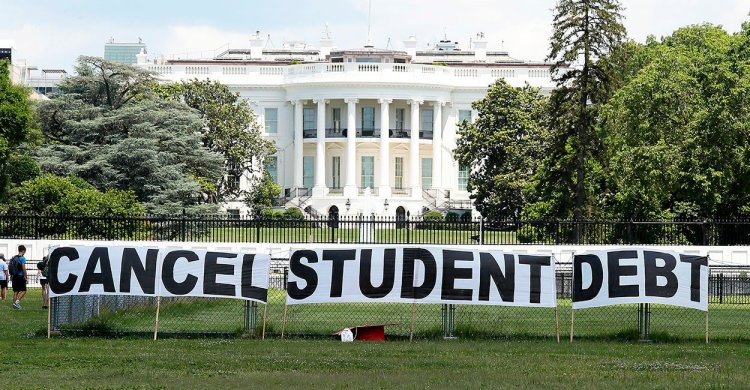Biden’s Transfer of Wealth to the Wealthier
President Joe Biden acted as if he was being compassionate to people suffering economic hardships when he announced last week his plan for forgiving billions... Read More The post Biden’s Transfer of Wealth to the Wealthier appeared first on The Daily Signal.

President Joe Biden acted as if he was being compassionate to people suffering economic hardships when he announced last week his plan for forgiving billions of dollars in student loans.
“Using the authority Congress granted the Department of Education, we will forgive $10,000 in outstanding federal student loans,” he said.
“In addition, students who come from low-income families which allowed them to qualify to receive a Pell Grant will have their debt reduced $20,000,” he said.
”Both of these targeted actions,” he claimed, “are for families who need it the most—working and middle-class people hit especially hard during the pandemic making under $125,000 a year.”
What he is actually doing is transferring wealth from people who earn less to people who earn more.
As this column noted three weeks ago, Census Bureau data indicates that the more educated a person is the more likely they are to accumulate wealth.
In households where the best-educated person had graduated from high school but never attended college, the median wealth was $40,560. In households where the best-educated person had earned a bachelor’s degree, the median wealth was $196,800.
Not surprisingly, median annual earnings reflect the same reality.
In 2020, according to the Census Bureau, men 25 and older who had graduated from high school and worked full time year-round had median earnings of $49,661. Women 25 and older who had graduated from high school and worked full-time year-round had median earnings of $36,256.
But men 25 and older who had earned a bachelor’s degree and worked full time year-round had median earnings of $81,339. Women 25 and older who had earned a bachelor’s degree and worked full time year-round had median earnings of $61,341.
Thus, male college graduates had median earnings that were $31,678 more than the median earnings of men who only graduated from high school. Female college graduates had median earnings that are $25,085 more than the median earnings of women who only graduated from high school.
So, how much does it cost to get a college degree and attain these higher annual earnings?
Table 330.10 from the Digest of Education Statistics, which is published by the U.S. Department of Education’s National Center for Education Statistics, lists the “average undergraduate tuition, fees, room, and board rates charged for full-time students in degree-granting postsecondary institutions.”
In the 2020-2021 school year, according to the digest, the average for “total tuition, fees, room and board” at all degree-granting postsecondary institutions was $25,910.
The average at nonprofit degree granting institutions was $49,210.
At that rate, students who spend four years earning a bachelor’s degree at a nonprofit college would spend a total of $196,840 for that degree.
According to the Census Bureau, they would then belong to that class of college-educated Americans in which males have median annual earnings that are $31,678 more than the median annual earnings of those who only graduated from high school and females have median annual earnings that are $25,085 more than those who only graduated from high school.
A college-graduate male making the median of $31,678 more per year than a high-school educated male would need to work about 6.2 years to have those college-increased earnings (not counting the money the government taxed away) cover his college expenses.
A college-graduate female making the median of $25,085 more per year than a high-school educated female would need to work about 7.8 years to have her college-increased earnings (not counting the money the government taxed away) cover her college expenses.
Over the past century, the percentage of Americans earning a bachelor’s degree has increased more than tenfold. In 1920, according to the National Center for Education Statistics, only 3.3% of Americans 25 and older had earned a bachelor’s degree or higher. In 2021, it was a record 37.5%.
Nonetheless, the majority of Americans 25 and older—62.5%—have not earned a bachelor’s degree or higher.
Biden’s plan to forgive student loan debt is ultimately a transfer of wealth from this class of Americans, who earn less on median, to college graduates, who earn more.
It is not an act of compassion, but of theft.
It unjustly transfers wealth from Americans who did not go to college to those who did, and from Americans (and their families) who did pay for their college and gives it to colleges that charge too much and to former students who will now pay less than they owe.
It is an elitist expansion of the welfare state.
COPYRIGHT 2022 TERRENCE P. JEFFREY
DISTRIBUTED BY CREATORS.COM
The Daily Signal publishes a variety of perspectives. Nothing written here is to be construed as representing the views of The Heritage Foundation.
Have an opinion about this article? To sound off, please email letters@DailySignal.com and we’ll consider publishing your edited remarks in our regular “We Hear You” feature. Remember to include the url or headline of the article plus your name and town and/or state.
The post Biden’s Transfer of Wealth to the Wealthier appeared first on The Daily Signal.















:quality(85):upscale()/2025/02/27/808/n/1922398/26784cf967c0adcd4c0950.54527747_.jpg)
:quality(85):upscale()/2025/02/03/788/n/1922283/010b439467a1031f886f32.95387981_.jpg)



